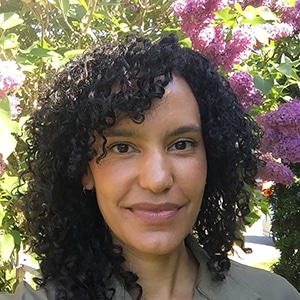The Power of Supported Strategic Planning: 5 Tips for Using ThoughtExchange











When done right, strategic planning can be a transformative process in school districts. It builds a shared vision, aligns the community, and drives meaningful, measurable outcomes—ultimately shaping the future of students, staff, and the broader community.
Despite their importance, 67% of strategic plans fail due to poor execution, often caused by common obstacles such as misaligned goals, a lack of collaboration, or implementation gaps.
To create dynamic plans that inspire trust and deliver results, education leaders need to actively engage their communities and tailor their plans to address stakeholders’ needs. The right tools and approach will help build effective, community-backed plans.
In this Article
Why community engagement matters for effective strategic planning
Navigating tight budgets and contrasting viewpoints to create a strategic plan that truly reflects your district's unique character and values is a complex task. Community engagement is crucial, serving as the essential tool for building lasting trust.
When done right, gathering community feedback is not just a mechanism to measure success; it's the process that aligns diverse communities and demonstrates that their voices are heard and valued.
Choose an engagement platform that enables a flexible and iterative process—and consider the strategies below to develop plans that build enduring trust, improve collaboration, and achieve meaningful, sustained results.
Tip #1: Gather community feedback
Why: Communities are the heartbeat of any school district. Engaging them often and with intention ensures your strategy aligns with their priorities while building trust and ownership.
How: Use surveys, town halls, focus groups, and one-on-one interviews with families, students, and community members. Ask open-ended questions like, “What’s one thing you’d change about your school?” or “What matters most to you in education?”
Put ThoughtExchange to work for you:
An AI-powered engagement platform like ThoughtExchange is mobile-friendly and has simultaneous translation in multiple languages to ensure broad participation. Be transparent—share what you hear and how you’ll use it.
Tip #2: Gather internal feedback
Why: Successful implementation depends on staff buy-in. When teachers and administrators feel heard, they’re more likely to align their daily practices with the district’s strategic goals.
How: Conduct listening sessions and anonymous surveys with teachers, administrators, and staff. Focus questions on key areas like teaching conditions, resource needs, and perceptions of current district initiatives.
After gathering input, summarize the themes and share them back with staff to validate their voices and demonstrate how their feedback is influencing the plan.
Put ThoughtExchange to work for you:
- Ask Advisor for thematic and sentiment analysis or summaries of participant feedback. Go deeper with custom prompts.
- Let Advisor draft important documents for you, strategic planning progress updates, and so much more.
- Get suggested next steps from Advisor based on participant feedback and district context, giving you more clarity for decision-making.
Tip #3: Find common ground
Why: Polarized views on critical issues like equity, safety, and curriculum can derail even the most well-intentioned plans. Building consensus ensures progress is both inclusive and sustainable.
How: Use ThoughtExchange’s analysis and comparison tools to map out where participant priorities overlap. Facilitate engagement that enables diverse groups to reflect on one another’s perspectives and identify their shared goals. Pinpoint agreement areas before addressing differences. Anchor your strategy with agreed-upon principles or goals.
Put ThoughtExchange to work for you:
- Use the Common Ground tool in Article to highlight polarizing topics in the group and the common ground issues the groups agree on.
- Use the Filter tool in Article to identify differences and similarities in themes and summaries between segmented groups.
- Use the Survey Comparison tool to identify differences and similarities in favorability between segmented groups.
“Whether through surveys, interviews, or open-ended discussions, ThoughtExchange’s AI helps me easily identify concerns and surface common themes. It helps me ensure we’re considering all voices, especially those who may not usually come to meetings.”
Tip #4: Align your community on the strategy
Why: Aligned communities are powerful drivers of success. When stakeholders rally around a common vision, they create momentum and shared accountability.
How: Once you’ve drafted the strategy, present it in clear, plain language—through infographics, summary videos, or interactive web pages. Engage the community in feedback sessions to gather final input and make adjustments.
Then, roll out the strategy with a unified message across all channels, including newsletters, social media, and school board meetings. Reinforce how the plan connects to the community’s input by quoting their feedback.
Tip #5: Measure performance
Why: Strategic planning is an ongoing process. Regular evaluation and adjustment ensure plans remain relevant and practical.
How: Define clear, measurable goals and choose a handful of key indicators (e.g., attendance, student achievement, staff retention). Create a public-facing webpage and regular progress reports to track results.
Involve your community and staff in reviewing data and providing input to adjust strategies. Celebrate milestones to maintain momentum and accountability.
Thriving communities create thriving districts
Strategic planning in education is about cultivating a shared purpose, engaging diverse perspectives, and driving impactful results. A plan’s success lies in adapting to evolving community needs while staying rooted in the district’s vision.
Education leaders who use a comprehensive AI-powered engagement platform to prioritize open dialogue, shared ownership, and continuous improvement will overcome common challenges and inspire meaningful change—building thriving communities where every student can succeed.





